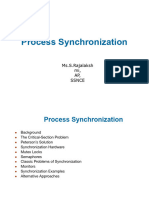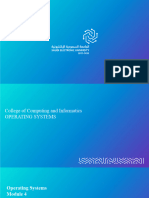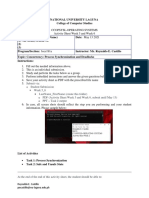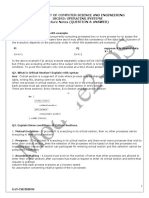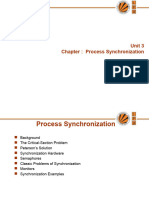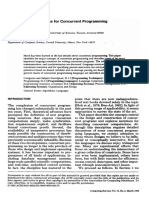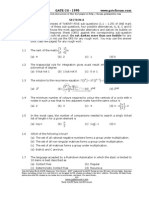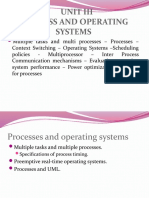0% found this document useful (0 votes)
81 views31 pagesCh-6 - Process Synchronization
This document outlines synchronization tools used to address race conditions that can occur when multiple processes access shared resources concurrently. It discusses the critical section problem, where processes need exclusive access to a shared resource. Early solutions like interrupt disabling did not fully solve the problem. Peterson's algorithm provides a provable solution using shared variables and busy waiting. However, on modern architectures instructions may be reordered, invalidating the algorithm. Synchronization hardware like memory barriers can enforce ordering to ensure correctness.
Uploaded by
sankarkvdcCopyright
© © All Rights Reserved
We take content rights seriously. If you suspect this is your content, claim it here.
Available Formats
Download as PDF, TXT or read online on Scribd
0% found this document useful (0 votes)
81 views31 pagesCh-6 - Process Synchronization
This document outlines synchronization tools used to address race conditions that can occur when multiple processes access shared resources concurrently. It discusses the critical section problem, where processes need exclusive access to a shared resource. Early solutions like interrupt disabling did not fully solve the problem. Peterson's algorithm provides a provable solution using shared variables and busy waiting. However, on modern architectures instructions may be reordered, invalidating the algorithm. Synchronization hardware like memory barriers can enforce ordering to ensure correctness.
Uploaded by
sankarkvdcCopyright
© © All Rights Reserved
We take content rights seriously. If you suspect this is your content, claim it here.
Available Formats
Download as PDF, TXT or read online on Scribd
/ 31




